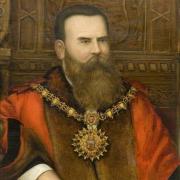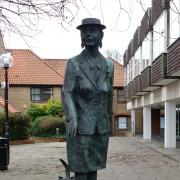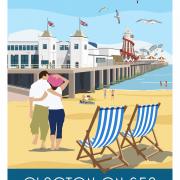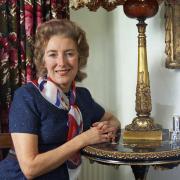Hannah Gildart meets Wanda Whiteley, author of The Goldhanger Dog, to find out how stories of Tudor Essex and our sweeping coastline inspired her novel
Being an animal lover, the title of your book, The Goldhanger Dog, instantly appealed. Can you give us an overview of the story?
It is a tale of two misfits – a 15-year-old girl who has an uncanny bond with animals and the grumpy turnspit dog she rescues. When locals turn against the girl, calling her a witch, the pair seek sanctuary at New Hall palace with Princess Mary. Alienated in a world of spies and courtiers, the girl is befriended by a trio of acrobats and players. She is drawn to one of them, only to find he holds a devastating secret.
The novel is a coming-of-age story, and although it works for teens, I think that adults experience a poignant nostalgia when they read of young love. I want the reader to feel so immersed in my story that they suffer a jolt when they have to return to modern life.

Lots of people don’t realise the royal connections our county had. What made Essex so important in Tudor times?
Rich farmland, busy ports, proximity to London. The Blackwater Estuary was seething with caravels, barges and fishing vessels; it was all about sea trade in those days. Mary Tudor (Henry VIII’s first-born) owned great tracts of Essex, including New Hall, her great palace in Boreham (one wing of which still remains). But it was a divided society – even more than today – with a massive gulf between rich and poor. Men who land-grabbed from the monasteries in Henry VIII’s reign, such as the aptly named Baron Rich of Leez Priory, were the oligarchs of their time.
An exciting era to set your book in! Was there anything in particular that inspired the story?
Sometimes you read of a real-life adventure that is even more thrilling than fiction. For me, one brief side-note in history captured my imagination. In 1551, desperate to escape England, Mary Tudor planned to slip aboard a ship moored at Stansgate on the Blackwater. Hiding out at Woodham Walter Hall, she and her lady-in-waiting hastily stuffed sacks with their belongings. But the plan failed when Mary lost her nerve, fearing that the roads and creeks were crawling with watchers.

What was it about the Essex countryside, and the Blackwater Estuary in particular, that inspired you?
The Essex marshes are deeply haunting: the cries of the seabirds, the mists, the livid green of the marsh grass against the grey of mud and water. And above you, great turbulent skies. You feel like you’re at the ends of the earth. From the moment I first saw the mile-long causeway to Osea Island, where the tide sweeps in faster than a man can run and quicksand can trap the unwary, I was hooked. It’s a writer’s dream.
You’ve spent 20 years in the publishing industry; you must have read some wonderful stories. How does it feel to now be writing your own?
I have always loved working with authors, first in publishing, then in my own critiquing and editing business, Manuscript Doctor. Before trying my hand at a novel, I co-authored Streetkid, which was a Sunday Times bestseller – but that was someone else’s story; this is my own, and nothing beats that.
The Goldhanger Dog by Wanda Whiteley is published by Lammas Publishing and is available in all good bookshops and online. Wanda will be giving a writers’ workshop on June 11 as part of the Essex Book Festival. She will also be running a life-writing course in Transylvania.

You may like William Gilbert, Colchester's forgotten genius: https://www.greatbritishlife.co.uk/people/william-gilbert-father-of-electricity-9036324
You may like secrets of Essex almshouses: https://www.greatbritishlife.co.uk/lifestyle/heritage/secrets-of-essex-almshouses-9096324




























